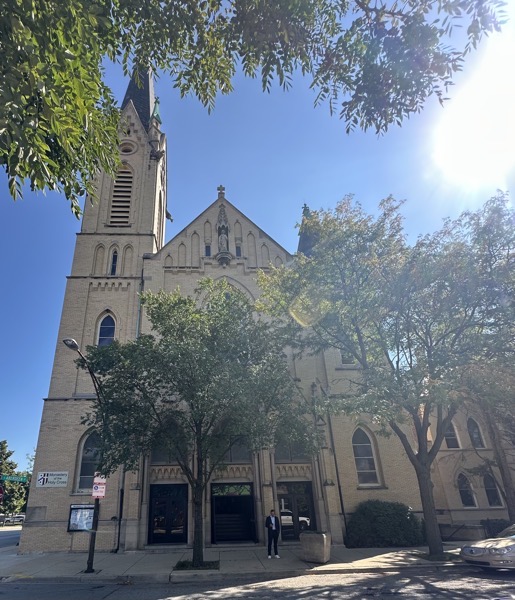Holy Cross Monastery isn’t on the list of archdiocesan churches, which kind of makes me wonder if there are other monasteries “missing” from the list. There are two Franciscan convents that I’m aware of that are on the list, but I guess that’s because they offer something approaching a traditional parish, although Holy Cross is kind of a parish in that they offer a regular Sunday Mass open to the public although they have no territory like other parishes. On the other hand, there are oratories on the list which don’t have territory and at least one of them also doesn’t offer regular Masses.
Assuming I saw the full complement of monks at Mass this morning, the Benedictine community of Holy Cross Monastery consists of four priests and five brothers¹. The Mass was mostly in Latin with a great deal of Gregorian chant. They follow the Vatican II missal texts, but the liturgy of the eucharist was celebrated ad orientem (facing away from the congregation).
I do find that ad orientem makes for a rather different experience of the Mass. With the common celebration, facing the congregation, it makes the prayers of the eucharistic sacrifice seem kind of like a performance, while with ad orientem, it feels like the congregation is—at least passively—participating in the sacrament in a way that facing the congregation does not. Which doesn’t mean I’m about to run off and join an SSPX church any time soon. I quite like the Vatican II liturgy. I just also see the value and beauty of the traditional practice.


- For the uninitiated, a monk would be a member of a cloistered order, whether or not he’s ordained. In some communities, all or most of the monks are ordained priests, but this tends to vary widely based on the community. Note also that many figures who are termed monks in common parlance, are not, actually monks, like Franciscan brothers who wear the brown robes and tonsure that are viewed as the marks of a monk, but since they don’t live in monasteries they aren’t actually monks, much like a nun, properly speaking would be a religious sister living in a cloistered community and not, as common parlance suggests, any religious sister.
Leave a Reply